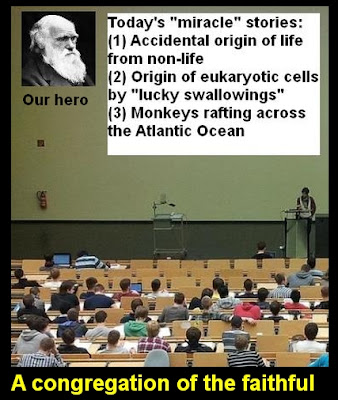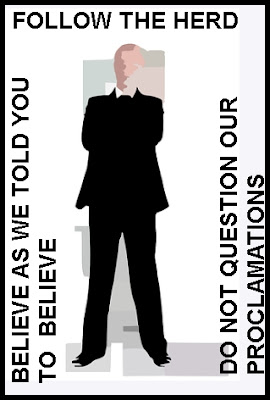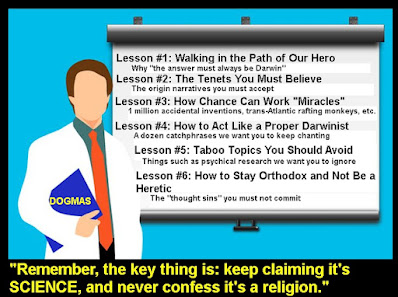I have at this site written quite a bit about the preservation of mind and memory after surgeries that removed large portions of the brain, sometimes half of the brain. Examples were my posts "Preservation of Mind and Memories After Removal of Half a Brain" and "Cases of High Mental Function Despite Large Brain Damage." There is another way to look for evidence of how sensitive the mind is to brain damage: we can look for cases of cognitive effects of traumatic brain injury (often referred to as TBI). Every year we have many cases of traumatic brain injury or TBI that result from events such as accidental falls, traffic accidents, car crashes or people being shot in the head.
Before discussing such cases, I will need to discuss how there are several reasons why we should assume that the cognitive effects of traumatic brain injuries are probably not as high as typically reported in scientific studies.
Confounding factor #1: the incentive of many to perform poorly on cognitive tests after a brain injury. There is strong reason to suspect that in many cases people given cognitive tests after a traumatic brain injury may not be trying as hard as they can on the tests. Some of the subjects (such as those injured in a car accident either inside or outside of a vehicle or those who fell in a work accident) may have pending law suits or pending benefit applications, and may think that good performance in cognitive tests may reduce their chance of being rewarded lots of money in a law suit or through a benefit application. There are three ways in which a person might receive money after a traumatic brain injury:
(1) The person might engage in a law suit against a car driver that results in a large settlement such as an award of $100,000 or more.
(2) A person might apply for benefits under the Worker's Compensation program that provides monthly payments to workers injured on the job.
(3) A person might apply for disability benefits that can be provided by the Social Security Administration if a worker has been judged to be disabled.
Given all of these possibilities for potential financial gain after having a traumatic brain injury, it would not be surprising if many people who have had traumatic brain injury do not try as hard as they can on tests of their cognitive abilities. Many people who have traumatic brain injury may think that getting a high score on a cognitive test might damage their ability to get future benefits or future settlement money.
Indeed, in the paper "Noncredible Explanations of Noncredible Performance on Symptom Validity Tests" we read quite a bit about reasons for thinking that some of those tested after traumatic brain injury might not have been trying as hard as they could. Here are some excerpts:
"Invalid test results from poor effort or deliberate underachievement do not occur only in groups where there is an obvious external incentive to appear cognitively impaired, such as those seeking financial compensation for cognitive impairment. Even in groups previously assumed to be highly motivated to do well, effort may be poor, leading to invalid test results....Neuropsychologists now know that, in many different contexts, effort can be low to a degree that is sufficient to invalidate test results, especially if there is an incentive to appear impaired (e.g., Chafetz, 2008; Chafetz, Prentkowski, & Rao, 2011; Flaro, Green, & Robertson, 2007; Sullivan, May, & Galbally, 2007)....For people with an incentive to appear impaired and who fail effort tests, the observed test scores typically underestimate actual ability to a marked degree (Fox, 2011; Green, 2007; Meyers et al., 2011; Stevens et al., 2008). In groups of disability claimants or compensation claimants, including those who were already receiving financial disability benefits, it was found that about 30% of cases were not making enough effort to produce valid test results, and in the MTBI group, the figure was roughly 40% (Green et al., 2001)."
There are techniques that can be used to help weed out "memory malingering" in memory tests of those with traumatic brain injury. One technique is to include some easy tests that almost no one fails, and look for failure in such tests, which might be an indication of lack of effort. Another technique is to take the same tests at different intervals, taking the best result at any interval as being the more reliable indication of memory performance.
Confounding factor #2: selection bias in picking subjects having traumatic brain injury. We must wonder whether the scientists selecting the subjects for papers on traumatic brain injury have a bias in looking for subjects with particularly bad memory problems, because they are hoping to get a result that fits in with the expectations of their colleagues and peer reviewers of their papers. We should look for any confession by the paper authors that they selected patients who had reported memory problems, rather than selecting random patients with traumatic brain injury, regardless of how good their memory was. Any such confession means that the paper may not be telling us about what percentage of traumatic brain injury patients suffer from similar problems. Similarly, if scientists select for some study only people who are gay alcoholics, they may report a high alcoholism rate among gay people; but we won't learn from such a method what percentage of gay people are alcoholic.
Confounding factor #3: the group of those with traumatic brain injury may be less intelligent and more forgetful than an average group of non-injured people of the same size. While traumatic brain injury often occurs for reasons beyond any person's control, very often such injury happen because of some causal factor that might have been avoided by someone of excellent intelligence and memory. For example, many traumatic brain injury cases occur to reckless or intoxicated drivers, to people who failed to use seat belts, or people who were walking in some dangerous way, to people who were not wearing helmets while bicycling or riding motorcycles, to people who recklessly jaywalked, and so forth. We therefore have a strong reason to suspect that the group of all people with traumatic brain injuries may have had a below-average intelligence or a below-average memory, or both. Accordingly, showing a small difference in memory or intelligence between those with traumatic brain injury and those without injury does not necessarily show that brains make minds or that brains store memories.
Confounding factor #4: traumatic brain injury may degrade perception, muscle skills, eyesight and hearing skills without decreasing core intelligence and memory, in a way that causes lower scores on cognitive tests. Cognitive tests are rarely pure measures of memory and intelligence. For example, a person with a damaged brain may have a damaged vision ability that degrades his performance on paper-based cognitive tests. Also, a person with a damaged brain may have a damaged muscular ability that degrades his performance on any test requiring muscle skills such as filling in the right little circles on a test sheet.
Confounding factor #5: incidents producing traumatic brain injury may increase apathy, depression or pain, resulting in lower scores on memory tests that are not caused by lower cognitive ability. It is has often been reported that following a traumatic brain injury someone may experience pain, depression or an increased level of apathy. Such factors might tend to cause a person to perform more poorly on cognitive tests, for reasons other than cognitive deficits.
Confounding factor #6: memory tests often involve subjective scores by analysts who may be biased towards giving negative scores to those with traumatic brain injury. Some memory tests can be performed without any subjective analysis by an analyst. For example, with the Famous Faces Test, a person either does or does not name the person shown in a photograph. But in other widely used memory tests, there is a strong possibility of biased analysis. For example, there is an Autobiographical Memory Interview test in which an analyst rates how well a subject has performed when asked to recall incidents at various parts of his life. But if an analyst knows that a subject has had traumatic brain injury, the analyst may be more prone to rate the subject's response poorly. To avoid such a bias, a robust blinding protocol would be needed, so that the analyst cannot tell whether the subject had a brain injury. But neuroscience experiments typically fail to use blinding protocols, and when they are used they are typically not robust protocols. A robust blinding protocol for a memory test would be one in which analysts could not even see the people giving answers, as such people would often have physical signs of their injury.
In light of these six confounding factors, under the hypothesis that the brain does not make the mind and does not store memories, we might still expect to see some modest differences in cognitive test scores between those with traumatic brain injuries and those without such differences. But we should expect that the differences will usually not be terribly dramatic, and that differences might tend to show up sometimes and be absent in other cases. Let us look at some scientific papers to see whether such an expectation is met.
- The paper "Cognitive Impairment 3 Months After Moderate and Severe Traumatic Brain Injury: A Prospective Follow-Up Study" gives us the result of cognitive tests on people who had brain injuries as the result of events such as falls and traffic accidents. In the Discussion section we read that after moderate Traumatic Brain Injury (TBI), "most patients had a normal neuropsychological assessment," with no more than 1 score much below normal (or, to put it more technically, no more than 1 score below 1.5 standard deviations below the norm). We read that "even after severe [brain] injury, normal performances were found in one third of patients." The authors say, "This was unexpected." We are told that the average total IQ score of 35 subjects with moderate traumatic brain injury was an above-average score of 109, and the average total IQ score of 26 subjects with severe traumatic brain injury was an above-average score of 103.
- The paper "Neuropsychological functioning during the yearfollowing severe traumatic brain injury" studied cognitive functioning in 65 subjects who had severe brain damage, mostly after road traffic crashes. The patients were rated with a level of impairment of "mild" or "severe" on various measures, based on tests 6 months after the injury and 1 year after. Fewer than half of the subjects were rated as having "severe" impairment in memory performance tests taken at the 1-year mark. Only 9% of the subjects were rated as having "severe" impairment in one test of executive function at the 1-year mark, with a minority rated as having "severe" impairment in another test executive function at the 1-year mark. One test of attention at the 1-year mark result showed only 8% with a severe impairment, and another test of attention at the 1-year mark result showed only 28% with a severe impairment. The average IQ of the brain-damaged subjects was 93, and we don't know whether this below-average result was caused by brain injury. There is reason to suspect that the set of average people suffering from traffic accident brain damage may be slightly below average in IQ, given that those with higher IQ might tend to avoid such accidents.
- The paper "Association of Traumatic Brain Injury With Dementia and Memory Decline in Older Adults in the United States" used a very large sample of 9,794 patients who had an assessment of traumatic brain injury. The study says, "There was no significant relation between history of TBI [traumatic brain injury] with LOC [loss of consciousness] and memory score or memory decline." We read this: "In a nationally representative prospective cohort of older adults free of dementia at baseline, we did not find evidence for any long-term associations between history of TBI [traumatic brain injury] with LOC [loss of consciousness] (of unknown frequency and severity) and risk of dementia over 14 years of follow-up. " We read that "similarly, decline in memory performance did not differ between participants with or without history of TBI with LOC." The authors state, "Our findings showing no association between TBI history with LOC and dementia are consistent with the results of several other recent studies looking at dementia, AD [Alzheimer's Disease], or AD biomarkers or neuropathology."
- The paper "Working memory after severe traumatic brain injury" tested 30 subjects who had almost all suffered brain damage due to high-velocity motor vehicle accidents. All of the patients had a post-traumatic amnesia (typically an inability to remember what happened a certain number of days before the accident). We are told that this post-traumatic amnesia lasted for at least seven days in all patients, and thar for 14 of 21 patients the post-traumatic amnesia lasted 30 days or more, "suggesting that the majority of patients sustained an extremely severe TBI [traumatic brain injury]." The paper has nice easy-to-read graphs comparing the difference in performance between these brain-injured patients and control subjects. For a "digit span" working memory test (Figure 1) and a "word span" working memory test (Figure 3), we see no major difference between the brain-damaged patients and control subjects. There is also no difference in a "Brown-Peterson task" test, when conducted with "no interference." On some other tasks there is a substantial difference.
- The paper "Working Memory after Traumatic BrainInjury in Children" tested working memory in eighty children with mild or severe traumatic brain injury (TBI). The paper has nice easy-to-read graphs comparing the performance of the brain-injured with controls, and the first two of the graphs show no appreciable difference in performance in two working memory tests, even when comparing the severe cases with control (uninjured cases).
- The paper "Central executive system impairment in traumatic brain injury" is one that does not give us a random sample of patients with traumatic brain injury, because the paper tells us this about its 64 patients: "Patients were selected for participating in the study if they complained of lack of attention, poormemory or loss of efficiency in everyday life." Despite such a selection bias, Table III of the paper tells us that the majority of the subjects had "normal performance" in long-term memory acquisition, long-term memory storage, long-term memory delayed recall, sustained attention and short-term memory, with an average of about 60% of the subjects being normal in such areas.
- The paper "Models of Exceptional Adaptation inRecovery After Traumatic Brain Injury: A Case Series" discusses nine cases of people who suffered severe brain injuries causing them to be in comas of between 2 and 17 days. All of them made remarkable recoveries. For example, a computer engineer suffering a 15 day coma after a severe crash injury went back to his high-tech job and "helped to plan a complete reorganization of his division." Another recovered from a 14-day coma after a high-speed crash, earning a 4.0 grade point average.
- The paper "Working memory outcomes following traumaticbrain injury in children: A systematic review withmeta-analysis" presents no new experiments, but reviews existing papers on the topic. Using the acronym CE to mean "central executive," the paper says, "Further analyses revealed significant, moderate effect sizes for studies that utilized verbal CE tasks (k = 19, d = −0.56, 95% CI −0.71, −0.41, p < .001), but non-significant and small effect sizes for studies that utilized visuo-spatial CE tasks (k = 7, d = −0.26, 95% CI −0.60, 0.08, p = .13)." The paper notes that "Several studies, however, did not find deficits in CE [executive functions] in children and adolescents who had sustained TBI [traumatic brain injury]." The paper says, "The results of our meta-analysis, however, indicate that children with TBI do exhibit deficits, albeit small-to-moderate ones, in the PL[phonological loop] relative to controls, but not in the VSSP [visual-spatial sketchpad]." We read that "no relation was found between TBI severity and the two storage components," and that "In contrast to findings relating to the impact of TBI severity and to our expectations based on literature suggesting that the frontal lobes play a critical role in WM [working memory], no relationship was found between frontal injuries and WM [working memory] outcomes."







